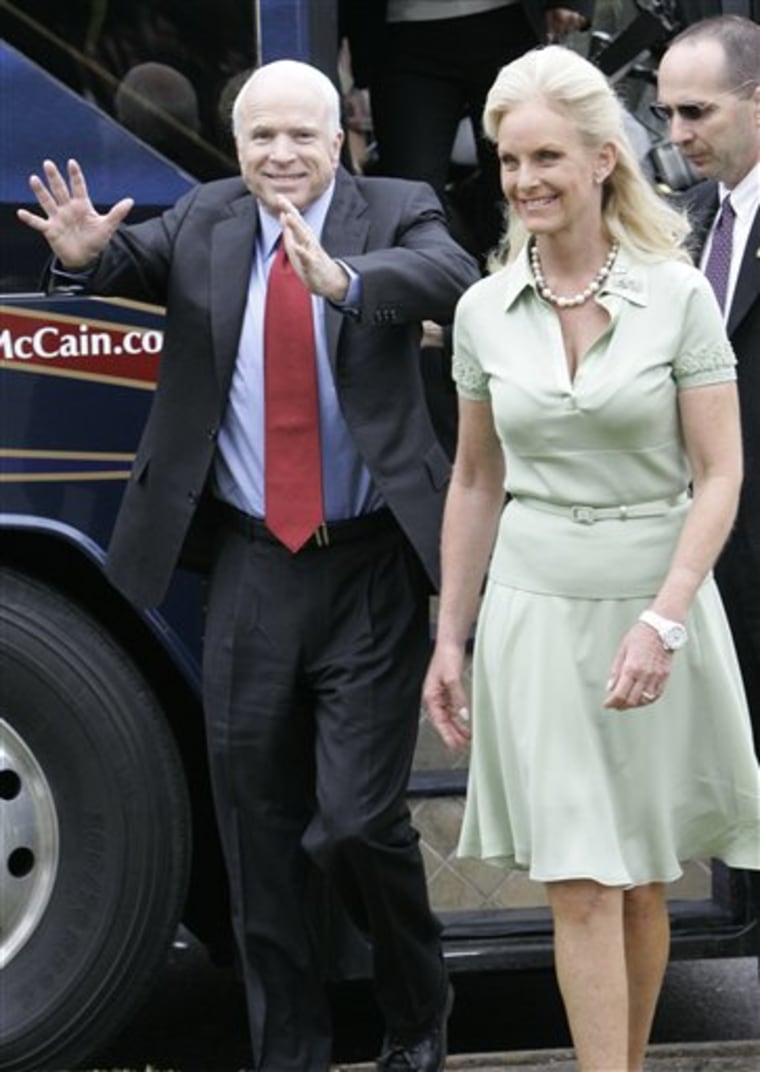Countless details separate John McCain's health care proposal from those of the Democratic presidential contenders. But the most significant difference is fundamental and philosophical. The two sides are offering divergent visions about the basic role of health insurance in the nation's social safety net. The fork in the road could not be starker.
The plans unveiled by Barack Obama and Hillary Rodham Clinton encourage the sharing of risk between the healthy and the sick, even at the cost of requiring the former to subsidize the latter. McCain's proposal would maximize individual choice in obtaining coverage, even at the cost of reducing risk-sharing. This contrast, which reflects the broader divide between the Democratic emphasis on community and the Republican focus on personal freedom, is the wellspring from which all of the major differences in the candidates' plans flow.
Confused press coverage and McCain's shift to other issues have obscured the magnitude of his proposal. But he may be pushing for greater changes than the Democrats in both the way Americans pay for health insurance and how they buy it--changes that have potentially profound implications for the pooling of risk.
Today, if a company provides its workers with health coverage, it can write off the cost of those premiums as a business expense, just like salaries. But Washington doesn't tax the employee on the value of that benefit. That "exclusion" makes employer-provided coverage tax-free for workers and is a major reason that employers insure 60 percent of Americans. Just 9 percent of Americans purchase insurance as individuals. (The rest rely on government programs or are uninsured.)
America subsidizes employer-provided coverage this way partly because it is administratively efficient, but mostly because it promotes the pooling of risk. By putting young, healthy workers into the same risk pool as colleagues who are older or sicker, employer-based coverage supports cost-sharing: All workers typically pay the same premiums because payments from workers who use less care balance those from workers who require more. There's a life-cycle effect, too: We pay relatively more in premiums for what we get when we're young but relatively less when we're old.
McCain's plan could threaten these arrangements, although how much is uncertain. He would eliminate the tax "exclusion," so that health premiums paid by employers would count as taxable income for workers. But he would replace the current exclusion with a refundable tax credit of $2,500 for individuals and $5,000 for families. For most workers whose employers continued to provide coverage, the initial effect would be a wash: The credit would (at least) offset their tax obligation from counting the employer premium contribution as income. The only change visible to workers whose employers still subsidize coverage might be "accounting on their pay stub," says McCain domestic policy adviser Douglas Holtz-Eakin.
But almost all analysts think that without the economic incentive that the exclusion provides, some employers would drop coverage. The great unknown is how many. Even employers who want to maintain coverage might find it increasingly difficult to do so. Some experts fear that younger workers would take McCain's tax credit and buy inexpensive policies outside work. That could leave employers covering only the oldest and sickest, a change that might drive up premiums to unsustainable levels.
These dynamics could prompt a modest shift from group coverage to individually based insurance--or a massive exodus. The greater the shift, the greater the erosion of risk-sharing, because in the individual market, the old or sick often have trouble obtaining any insurance--and pay much more than young, healthier people when they do get it. Fearing such consequences, Obama and Clinton would bolster group coverage by preserving the employer tax exclusion and adding new subsidies for companies to insure their workers.
But some experts, including centrists such as prominent health economist Jonathan Gruber, would take the gamble of McCain's tax credit plan. They consider it fairer than the exclusion, which reduces taxes most for affluent workers and penalizes people who buy insurance as individuals rather than through their employers. The catch is that many credit supporters (Gruber included) say it can work only if it is joined with reforms that ensure more risk-sharing and equity in the individual marketplace.
Obama and Clinton are proposing such reforms, but McCain would move in the opposite direction by vastly deregulating all insurance markets to promote competition. Next week we'll explore that component of his agenda.
